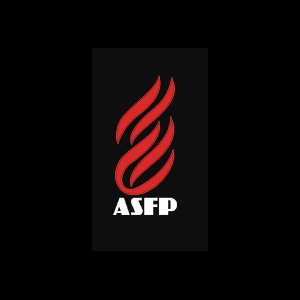The Association for Specialist Fire Protection (ASFP) held a Passive Fire Protection Workshop at the Institution of Fire Engineers (IFE) AGM and Conference in Brighton on 17 July. The session examined how passive fire protection is currently delivered and aimed to determine what improvements could be made with reference to four key pillars within the building lifecycle.
ASFP CEO Niall Rowan offered a brief introduction to the vital role of passive fire protection in saving lives and protecting firefighters and property. He also provided reviewed the current regulatory situation in the UK post Grenfell and the various Government consultations. Delegates at the interactive Workshop then considered potential improvements that could be made during design and specification; installation; inspection and certification; then through ongoing management/maintenance.
In discussing the design of buildings there was much agreement that fire safety should be considered early in the design process. Mr Rowan highlighted that the ASFP has been working with the Royal Institute of British Architects (RIBA) on creating a Fire Safety Overlay for the RIBA Plan of Works.
Fire risk management
It was highlighted that changes to Building Regulations do not apply to existing buildings
This provides a detailed specification for fire protection at the design stage and a schedule for fire throughout the construction process. It includes sign offs as construction progresses, with all information reaching the end-user to support adequate fire risk management. There was support for this work, but a recommendation that the Plan of Works should include an enhanced role for fire engineers.
Many in the audience raised concerns about enforcement, with inspections often not undertaken at crucial stages in the construction process and regulations not being strongly enforced. It was also highlighted that changes to Building Regulations do not generally apply to existing buildings.
Recommendations for improving monitoring during the construction process included raising understanding of what should be inspected and when such inspections should occur; making third party certification of products and installers mandatory; and reintroducing the Clerk of Works role.
Building Control Amendment Regulations (BCAR)
BCAR introduces an enhanced inspection process and defines the role of professionals
ASFP Ireland Operations Officer David O’Reilly highlighted how the design and construction process was handled in Ireland and after much discussion the Workshop delegates agreed that a similar process to the Building Control Amendment Regulations (BCAR) should be introduced in the UK, with designers having a responsibility to sign off the completed building. BCAR introduces an enhanced inspection process and defines the role of professionals throughout the process, requiring certificates to be signed at various stages by Assigned certifiers and Ancillary certifiers.
There was also much discussion about how to improve the quality of installation. One recommendation was to develop a benchmark of good installation for each project and inspect to it. It was also felt important to ensure the competency of installers and maintenance staff.
ASFP Head of Training Phil Brownhill highlighted that there was no mandatory requirement for any form of qualification to install fire protection but noted that the ASFP, in collaboration with the IFE, had developed a training course leading to Level 2 and Level 3 IFE qualifications The Workshop recommended that there should be mandatory qualifications for installers and inspectors of fire protection products.


















